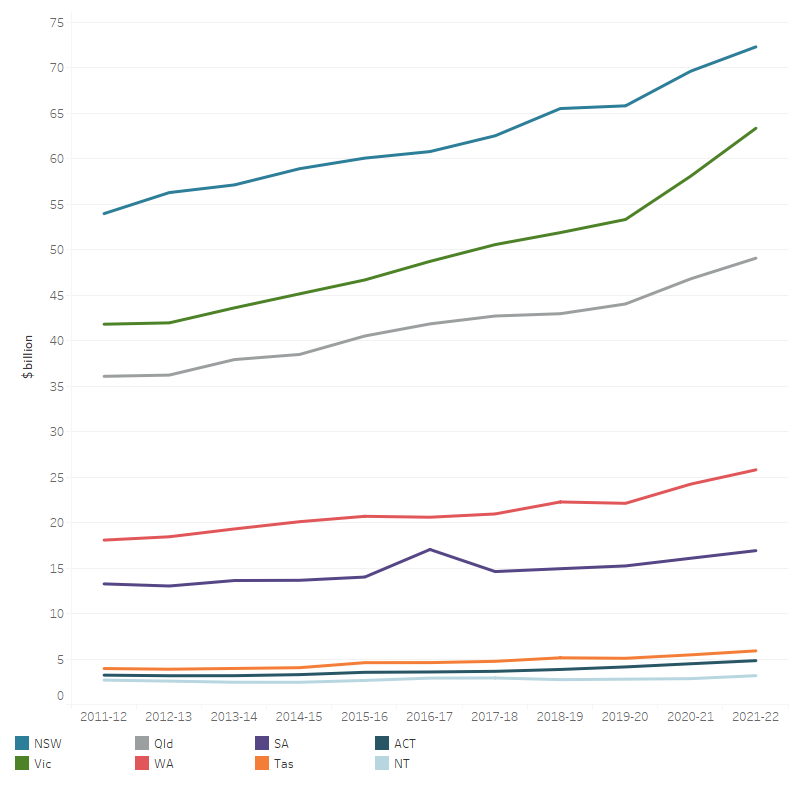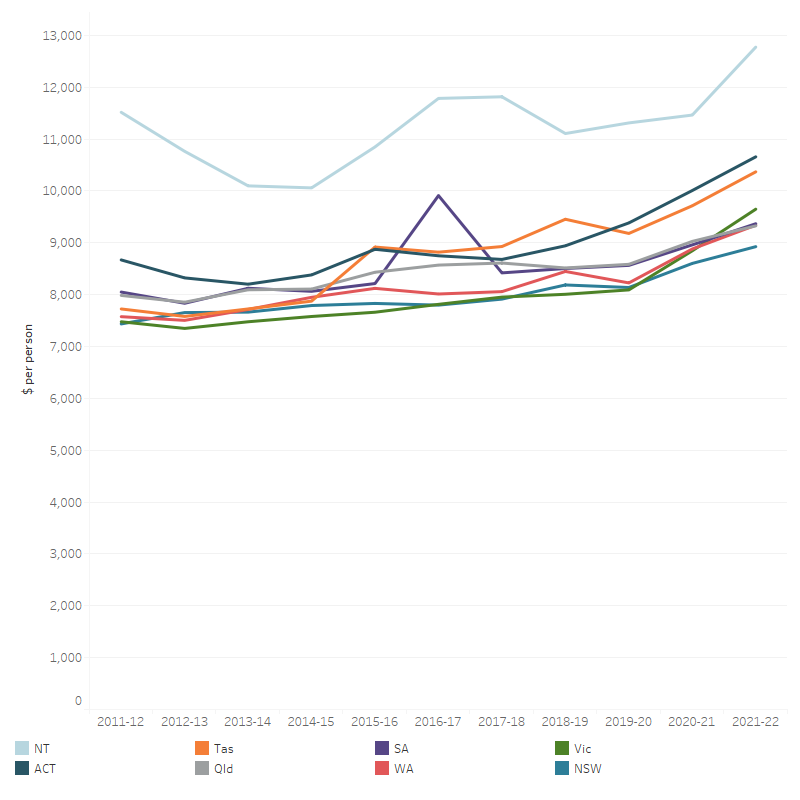Health spending in each state and territory
Of total health spending in 2021–22, more than half (56.2%) was spent in New South Wales ($72.3 billion) and Victoria ($63.3 billion) combined. These states also represented more than half (around 57%) of the Australian population (Figure 3; Table 37).
From 2020–21 to 2021–22, the growth in total spending ranged from 3.8% in New South Wales to 11.6% in the Northern Territory.
Figure 3: Total health expenditure for each state and territory, constant prices (a), 2011–12 to 2021–22
The line graph shows that total health spending was highest for New South Wales and lowest for the Northern Territory in the 10-year period. In 2021–22, total health spending was $72.3 billion for New South Wales and $3.2 billion for the Northern Territory. Total health spending increased between 2011–12 and 2021–22 for all states and territories.

(a) Constant price health spending is in 2021–22 prices.
Note: Spending increased in 2016–17 for South Australia (SA) is due to a large one-off capital project.
Source: AIHW Health Expenditure Database (Table 4).
In 2021–22, average per capita health spending was similar across all states and territories, except for the Northern Territory where average spending was $12,773 per person, compared with the national average of $9,365 (Figure 4).
Figure 4: Average total health expenditure per person (a) for each state and territory, constant prices (b), 2011–12 to 2021–22
The line graph shows that average total health spending per person for each state and territory increased overall from 2011–12 to 2021–22. Australian Capital Territory is excluded from the graph, as the Australian Capital Territory population is not an appropriate denominator. In the 10-year period, Northern Territory maintained the highest average total health spending per person while the other states and territories recording similar values.

(a) Based on ABS annual estimated resident population (Table 37).
(b) Constant price health spending is in 2021–22 prices.
Notes
- The ACT per person figures need to be treated cautiously, since a large volume of ACT spending are for NSW residents; The ACT population is therefore not an appropriate denominator.
- Spending increased in 2016–17 for SA due to a large one-off capital spending project.
Sources: AIHW Health Expenditure Database; Australian Bureau of Statistics (ABS 2023a) (Table 5).


